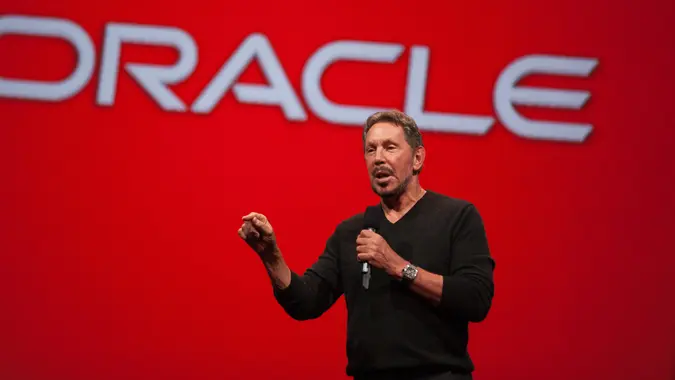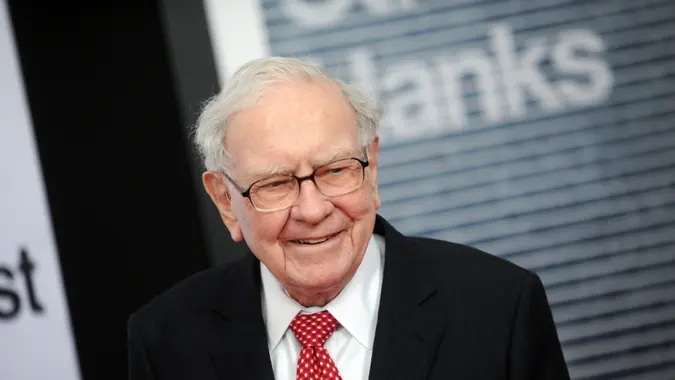I Asked ChatGPT What Would Happen If the Upper Class Paid Taxes at the Same Rate as the Lower Class — Here’s What it Said

Commitment to Our Readers
GOBankingRates' editorial team is committed to bringing you unbiased reviews and information. We use data-driven methodologies to evaluate financial products and services - our reviews and ratings are not influenced by advertisers. You can read more about our editorial guidelines and our products and services review methodology.

20 Years
Helping You Live Richer

Reviewed
by Experts

Trusted by
Millions of Readers
America’s progressive tax system is based on graduated brackets that require higher earners to pay a larger percentage of their income than lower earners — at least on paper.
I asked ChatGPT what would happen if the upper class paid taxes at the same rate as the lower class, and it explained that the rich would pay more, not less, if the law were changed to even the rates. In fact, it wrote that “the U.S. economy and society would experience major shifts.”
The Effective Rate Looks Nothing Like the Progressive Brackets
ChatGPT explained that, thanks to loopholes and deductions, the effective tax rate — what people actually pay — looks more like the following table than the familiar IRS brackets that levy a 10% income tax on the lowest earners and 37% on the highest.
| Income Group | Average Effective Tax Rate |
| Bottom 20% (low income) | 10% to 14% |
| Middle 20% | 15% to 18% |
| Top 1% | 25% to 27% |
| Top 0.01% | 23% or lower due to loopholes and capital gains |
ChatGPT summed it up with this: “Despite progressive tax brackets, effective tax rates (what people actually pay after deductions) show that the wealthiest often pay less than their tax bracket — especially if their income comes from investments taxed at lower rates (e.g., capital gains, dividends, carried interest).”
What Would Change If Everyone Paid the Same Rate?
The AI platform created a hypothetical scenario where all Americans paid the same effective rate of 20%. It came up with four dramatic changes that could result. The following is a verbatim recounting of its synopsis.
1. Massive Revenue Increase
- The ultra-wealthy would pay dramatically more.
- The top 1% currently hold over 20% of total income and over 40% of wealth.
- Equalizing their rates with lower earners could generate $500 billion to $1 trillion per year in added federal revenue.
This alone could fully fund universal pre-K, child care and perhaps even universal health coverage — without raising anyone else’s taxes.
2. Reduced Deficit and Debt
- The U.S. deficit would shrink significantly.
- Interest on debt could fall over time, freeing up more government funds for infrastructure, education or emergency reserves.
3. Simpler, Fairer Tax Code
- With fewer loopholes and income-type preferences (like lower capital gains rates), the tax code would become simpler and more equitable.
4. Behavioral and Economic Reactions
Wealthy individuals and corporations might:
- Shift income offshore, increase tax avoidance
- Reduce investment (if capital gains are taxed higher)
- Lobby aggressively to reinstate preferential treatment
It’s Much Better To Be Rich Today Than 50 Years Ago
The platform then provided historical context that puts today’s tax framework in perspective with this verbatim response.
- In the 1950s-’60s, the top marginal tax rate in the U.S. was over 90%, and the economy grew rapidly.
- Today, the top 1% pay a smaller share of their wealth and income than they did 40 to 50 years ago.
So the real impact is less about “raising the rich to poor’s rate” and more about closing loopholes that let the rich pay less than their tax bracket.
Summary
ChatGPT closed by summarizing its report with the following word-for-word synopsis.
If the rich paid the same effective rate as the poor:
- Massive new federal revenue
- Potential for big public investments or deficit reduction
- Greater tax fairness
- Possible economic tradeoffs from investment shifts or tax planning
 Written by
Written by  Edited by
Edited by 

























